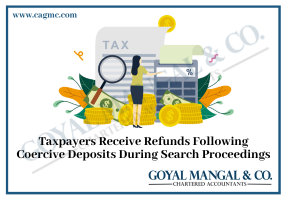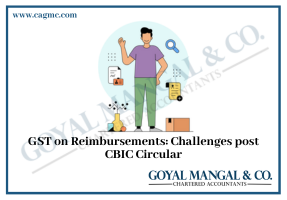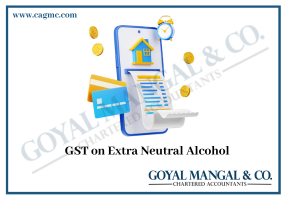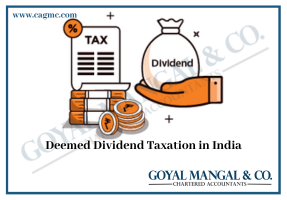
Secretarial Standards 1 and 2, as defined under the Companies Act, 2013 are vital tools for companies to follow when managing their internal affairs and communication with stakeholders. They act like guidebooks, making sure companies do things the right way. This article talks about how to give notice for meetings and when you can use shorter notice. It compares the rules for independent directors in both the Secretarial Standards 1 and 2.
|
Table of Content |
Overview of Secretarial Standard 1 -Meeting of the Board of Director
- This rule applies to meetings of the board of directors for all companies formed under the Companies Act of 2013
- Secretarial Standard-1 (SS-1) does not apply to One Person Companies (OPCs), Companies licensed under Section 8 of the Companies Act, 2013, or those governed by previous laws.
- Normally, when planning a meeting, you must provide notice to the attendees at least 7 days in advance. If you send the notice by speed post or registered post, you should add 2 more days.
- However, if there’s urgent business, you can give shorter notice. If an Independent Director can’t attend the meeting, the decisions made in the meeting become final if at least one Independent Director later approves them.
- If your company doesn’t have Independent Directors, the decisions become final when most directors agree to them.
- The board meeting notice should contain the Date, day, time, and location of the meeting, the Meeting’s serial number for reference, contact information, including the email address of the Chairman and Company Secretary (CS) and Information about the options for directors to participate in the meeting through electronic means.
- The notice sending proof should be retained for at least 3 years from the meeting date.
- If the rescheduled meeting date was not set during the original meeting, notice must be distributed at least one week (7 days) before the new meeting date.
- After formal incorporation within 30 days first board meeting needs to be held.
- There must be 4 board meetings held in each calendar year and the gap between the two should never be more than 120 days
- For One Person Company (OPC), Small Company, and Dormant Company situations:
- There shall be two board meetings held during each half of the year, with a minimum gap of 90 days between each meeting.
- At least once in a Calendar Year Need: To review the performance of Non-Independent Directors and the Board as a whole
- The records of attendance will be kept for a minimum of 8 fiscal years starting from the date of the most recent entry made in them.
- If at least one-third of the current directors demand the resolution, it must be implemented.
- Draft minutes shall be circulated within 15 days after the conclusion of meetings.
- The minutes must be recorded in the minute book within 30 days starting from the meeting’s conclusion.
- All meeting minutes will be permanently stored in both physical and digital formats, including a timestamp.
What is the required number of attendees for the meeting under Secretarial Standard 1?
- One-third of the entire strength of the director should be there.
- Two directors multiplied by any fraction within the shall be rounded up to the next one.
- Enough attendees must be there in a meeting.
- Any director who has a personal stake in the topic under discussion should be exempt from being counted as present and should be disqualified from participating.
- However, in the case of a Private Company, a director can participate once they have disclosed their interest.
- Directors who participate through electronic means will be included in the attendance
Overview of Secretarial Standard 2 – General Meeting
- This Secretarial Standard is relevant to the General Meetings of any companies established under the Companies Act, 2013.
- This Secretarial Standard -2 does not apply to a One Person Company (OPC) that is licensed under Section 8 of the Companies Act, 2013, or any other previous law.
- At least 21 days before the meeting, a notification will be provided, including any relevant documents. A more concise or brief notice.
- Approval can be granted if written permission is obtained either through physical or digital methods from a minimum of 95% of the eligible members who have the right to vote in the said meeting.
- The notice should include information regarding the meeting’s agenda, explanatory notes related to the agenda, an explanatory statement by Section 102 of the Companies Act, 2013, an attendance slip, a proxy form, and a route map.
- Evidence of notification should be retained for a minimum duration of three years, starting from the meeting date.
- A notice of at least 3 days is to be provided If the meeting is postponed for more than 30 days.
- Annual General Meeting `needs to be held by every company every financial year.
- After the financial year conclusion, the AGM should be held within 9 months.
- After the first AGM, the next meeting should be held within 6 months from the end of the financial year.
- For a public company, if the total number of members present is greater than 1,000, the quorum must be 5 members.
- If the total number of members is from 1,000 to 5,000, the quorum must be 15 members.
- If the total number of members is greater than 5,000, the quorum must be 30 members.
- For a Private Company, the quorum requirements are not specified in the given text.
- Two individuals were present in person.
- Throughout the meeting, enough participants must be present to constitute a quorum.
- When determining the quorum, proxies are not considered.
- A proxy is authorized to represent a member, provided that their total voting rights do not exceed 50 and their collective share capital in the company does not surpass 10 per cent.
- The minutes need to be recorded in the minute book within 30 days after the meeting has concluded.
- All meeting minutes should be retained permanently in both physical and electronic formats, including a timestamp.

Conclusion
In short, Secretarial Standard 1 is the foundation for proper corporate governance, that includes the fundamental principles. On the other hand, Secretarial Standard 2 use those principles with precise instructions, like adding the finer details to a painting. Together, these standards ensure companies operate efficiently, ethically, and transparently, building trust and reliability with their stakeholders.







